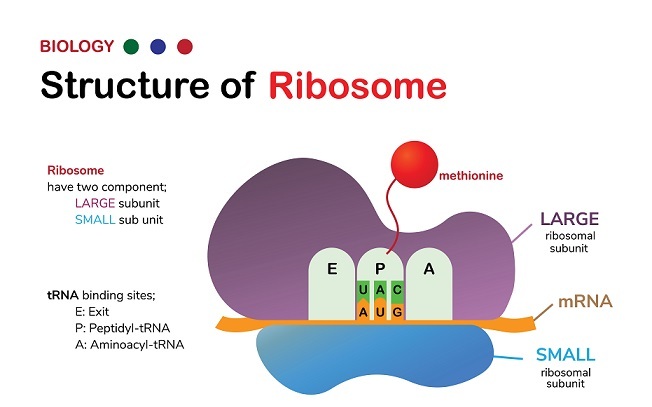
 Data Structure
Data Structure Networking
Networking RDBMS
RDBMS Operating System
Operating System Java
Java MS Excel
MS Excel iOS
iOS HTML
HTML CSS
CSS Android
Android Python
Python C Programming
C Programming C++
C++ C#
C# MongoDB
MongoDB MySQL
MySQL Javascript
Javascript PHP
PHP
- Selected Reading
- UPSC IAS Exams Notes
- Developer's Best Practices
- Questions and Answers
- Effective Resume Writing
- HR Interview Questions
- Computer Glossary
- Who is Who
Synthesis of Gene for Bacterial Tyrosine tRNA
Introduction
The genetic code is the set of instructions that specifies the amino acid sequence of a protein. In bacteria, the genetic code is carried by the messenger RNA (mRNA) which is translated by the ribosome. Transfer RNAs (tRNAs) play a crucial role in this process by bringing the correct amino acid to the ribosome, according to the codon on the mRNA. Each tRNA is specific for a particular amino acid and has an anticodon that pairs with the codon on the mRNA.

In this article, we will focus on the synthesis of the gene for bacterial tyrosine tRNA.
Overview of tRNA Synthesis
tRNAs are transcribed from DNA by RNA polymerase III, which recognizes specific promoter sequences upstream of the tRNA genes. The resulting transcript, known as a pre-tRNA, is then processed to form the mature tRNA. This process involves several steps, including cleavage of the 5' and 3' ends, addition of a CCA sequence to the 3' end, and modification of some of the nucleotides in the tRNA.
The gene for Bacterial Tyrosine tRNA
The gene for bacterial tyrosine tRNA is located on the bacterial chromosome and is typically around 76 base pairs long. The gene contains a promoter sequence that is recognized by RNA polymerase III, as well as a terminator sequence that signals the end of transcription. The gene also contains the coding sequence for the tyrosine tRNA, which is transcribed into the pre-tRNA.
Processing of pre-tRNA
The pre-tRNA undergoes several processing steps to form the mature tyrosine tRNA. First, the 5' end is cleaved by an endonuclease, leaving a 5' phosphate group. Next, the 3' end is cleaved by an exonuclease, leaving a 3' hydroxyl group. The CCA sequence is then added to the 3' end by the enzyme nucleotidyl transferase. Finally, some of the nucleotides in the tRNA are modified by specific enzymes to form the mature tyrosine tRNA.
Regulation of Tyrosine tRNA Synthesis
The synthesis of tyrosine tRNA is regulated by several factors. One of these factors is the availability of amino acids. When there is a high concentration of tyrosine in the cell, the synthesis of tyrosine tRNA is inhibited. This helps to prevent the overproduction of tyrosine tRNA, which could lead to the wasteful use of cellular resources.
Another factor that regulates tyrosine tRNA synthesis is the level of aminoacyl-tRNA synthetase. This enzyme is responsible for attaching the correct amino acid to the tRNA, and its level can influence the rate of tRNA synthesis. When there is a high level of aminoacyl-tRNA synthetase, the synthesis of tyrosine tRNA is increased.
Applications
Gene synthesis is the process of synthesizing artificial genes from scratch using chemical methods. It has become a powerful tool in molecular biology with a wide range of applications. Here are some of the major applications of gene synthesis ?
Creating Novel Proteins
Gene synthesis can be used to create novel proteins by assembling codons that code for specific amino acids. This is useful in studying the structure and function of proteins, as well as in engineering new proteins with desirable properties.
Vaccine Development
Gene synthesis can be used to design and produce vaccines against infectious diseases. For example, the gene for a viral antigen can be synthesized and used to create a vaccine that triggers an immune response against the virus.
Gene Therapy
Gene synthesis can be used in gene therapy to replace or modify defective genes associated with genetic disorders. Synthetic genes can be designed to correct mutations or replace missing genes, and then delivered to the patient using viral vectors.
Synthetic Biology
Gene synthesis is an essential tool in the emerging field of synthetic biology, which aims to design and engineer biological systems with new functions. Synthetic genes can be used to create synthetic organisms, biosensors, and metabolic pathways.
Evolutionary Studies
Gene synthesis can be used to reconstruct ancestral genes and study their evolution. By synthesizing genes that are similar to ancestral genes and comparing them to modern genes, researchers can gain insight into the evolution of gene function and structure.
Genetic Engineering
Gene synthesis is a key tool in genetic engineering, which involves modifying the genetic makeup of organisms. Synthetic genes can be used to introduce new traits into organisms, such as resistance to pests or disease.
Conclusion
Gene synthesis has a wide range of applications in various fields, including protein engineering, vaccine development, gene therapy, synthetic biology, evolutionary studies, and genetic engineering. As gene synthesis technology continues to advance, it is likely that new applications will emerge, making this technology even more useful in the future.
The gene for bacterial tyrosine tRNA is transcribed by RNA polymerase III and undergoes several processing steps to form the mature tyrosine tRNA. The synthesis of tyrosine tRNA is regulated by the availability of amino acids and the level of aminoacyl-tRNA synthetase. Understanding the synthesis and regulation of tRNA is important for understanding the process of translation and the production of proteins in bacteria.

